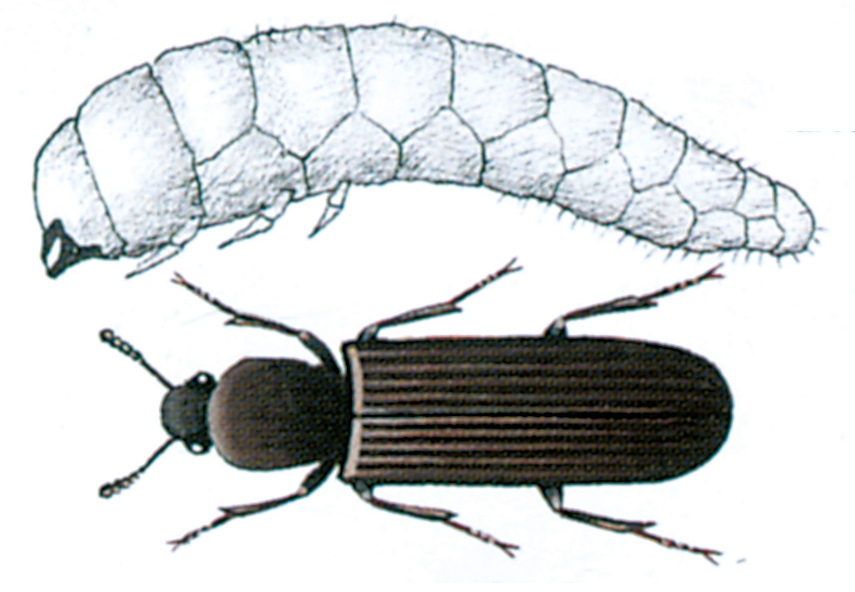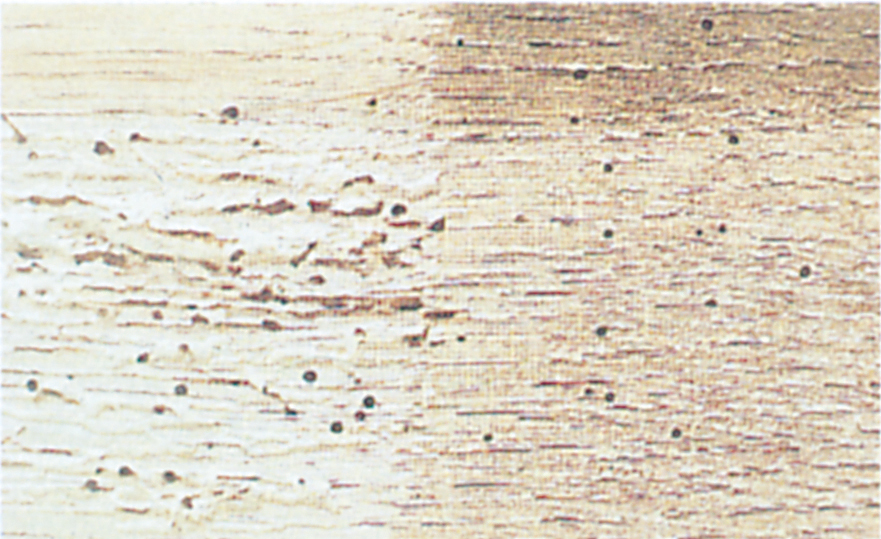(Latin: Lyctidae)

These beetles are very slender, brown and 2-5 mm long. They are particularly associated with deciduous trees that have large vessels, e.g. oak, ash, walnut, and with many tropical species, as well as bamboo. The female usually lays her eggs in the sapwood in the vessels themselves. The larvae feed on the starchy contents of the sapwood cells and gradually reduce the timber to a powdery mass surrounded by a thin shell. When fully grown the larvae gnaw their way towards the surface and pupate in an oval chamber. The adult beetles emerge through small circular exit-holes. Development normally takes one year.

In recent years powder post beetles have assumed some considerable importance. This is due in large measure to the way the timber is treated nowadays. In former times it was left to cure for years, and so the cells still living in it had a chance to use up their content of starch. In recent years there has been an increase in the practice of drying the timber by heat soon after the tree has been felled. This method kills the cells but preserves the starch in them. Timber treated in this way will therefore continue to be very attractive to many pests.
The species Lyctus linearis is fairly common in Britain and Europe, but it is the related Lyctus brunneus, rare as a native species, which is most often seen in houses. This beetle attacks parquet floors and oak panelling, which it may completely destroy. It frequently arrives in imported hardwoods from the tropics.




